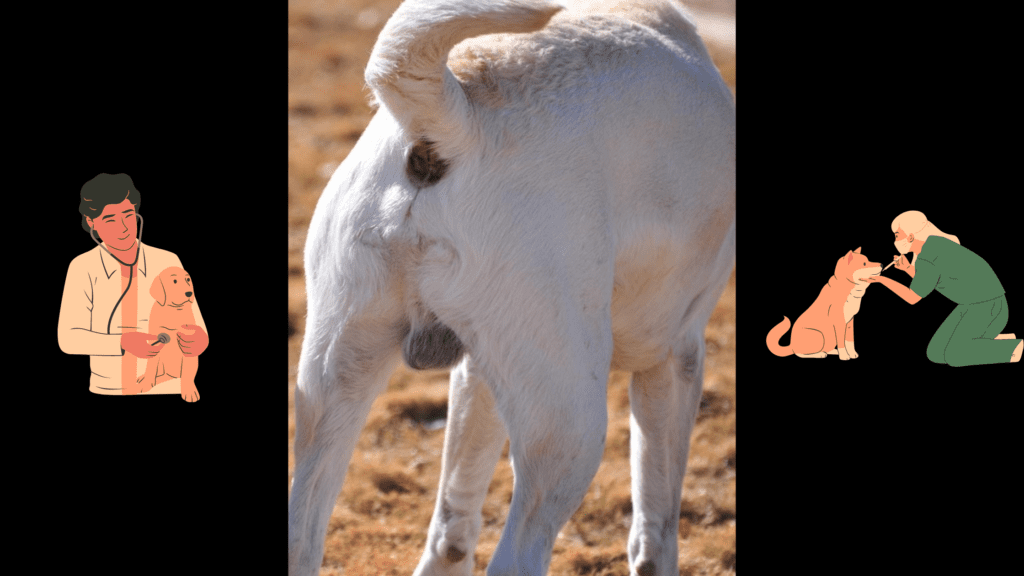Dog Hemorrhoids Prevention: Learn about the causes, symptoms, and treatments of hemorrhoids in dogs. Get expert advice on preventing and managing this common condition in your furry friend.
Understanding Dog Hemorrhoids
- Definition of Dog Hemorrhoids: Dog hemorrhoids are swollen veins in the rectum and anus, similar to the condition in humans.
- Importance of preventing dog hemorrhoids: Hemorrhoids can cause pain and discomfort for dogs, and prompt treatment is crucial to avoid complications.
What Causes Dog Hemorrhoids?
- Inactivity and obesity: A lack of Exercise and obesity can lead to increased pressure on the rectum and anus, causing hemorrhoids.
- Anal gland issues: Anal gland problems can cause irritation and swelling in the anus, leading to hemorrhoids.
- Constipation: Chronic constipation can also cause pressure and irritation in the rectum and anus, resulting in hemorrhoids.
- Genetics: Some dog breeds are more prone to developing hemorrhoids due to genetic factors.

Recognizing the Symptoms of Dog Hemorrhoids
- Rectal bleeding: One of the most common symptoms of dog hemorrhoids is rectal bleeding.
- Pain or discomfort during defecation: Hemorrhoids can cause pain and discomfort during bowel movements.
- Licking or biting at the anus: Dogs may lick or bite at their anus if they are experiencing discomfort or pain due to hemorrhoids.
- Scooting or dragging the hind end: Dogs may pull their rear end along the ground if they are experiencing pain or discomfort due to hemorrhoids.
You were preventing Dog Hemorrhoids
Diet and Nutrition
The Importance of a Healthy Diet for Preventing Dog Hemorrhoids
1. High-fiber Diet: A fiber-rich diet can help prevent constipation and promote regular bowel movements.
2. Proper hydration: Adequate hydration is essential for preventing constipation and promoting regular bowel movements.
3. Weight management: Maintaining a healthy weight can reduce pressure on the rectum and anus, helping to prevent hemorrhoids.
Exercise and physical activity
Regular Exercise can help keep your dog at a healthy weight and prevent constipation.
Anal gland expression
Regular expression of the anal glands can prevent build-up and irritation, reducing the risk of hemorrhoids.
Regular vet check-ups
Regular check-ups with a veterinarian can help detect and prevent any health issues, including hemorrhoids.
Treating Dog Hemorrhoids
A. Home remedies: Some pet owners may opt for simple home remedies, such as a warm compress or witch hazel, to relieve discomfort caused by hemorrhoids.
B. Medications: In more severe cases, medication may be necessary to reduce swelling and relieve pain.
C. Surgery: In some cases, surgery may be necessary to treat dog hemorrhoids. Your veterinarian can determine the best course of treatment for your pet.

Treating dog hemorrhoids at home can be done in the following steps:
- Keep your dog clean: Keep the area around the anus clean and dry to prevent infection and further irritation.
- Provide soft bedding: Ensure your dog has a smooth and comfortable place to sleep, such as a plush dog bed.
- Offer a high-fiber diet: Adding more fiber to your dog’s diet can help regulate bowel movements and prevent constipation.
- Offer plenty of water: Encourage your dog to drink more water to prevent dehydration and hard stools.
- Apply a warm compress: You can use a warm cloth to help soothe the area and reduce swelling.
If the hemorrhoids persist or your dog is in pain, it is best to consult a veterinarian for proper evaluation and treatment.
Summary of key points
- Hemorrhoids in dogs are swollen veins in the rectum caused by factors such as Inactivity, obesity, anal gland issues, constipation, and genetics.
- Symptoms of dog hemorrhoids include rectal bleeding, pain or discomfort during defecation, licking or biting at the anus, and scooting or dragging the hind end.
- Prevention methods include a high-fiber diet, proper hydration, weight management, Exercise, physical activity, regular anal gland expression, and regular vet check-ups.
- Treatment options range from home remedies to medications to surgery.
Importance of prompt diagnosis and treatment
- Early detection and treatment of dog hemorrhoids are essential to prevent complications and improve the chances of a successful outcome.
- Pet owners must monitor their dog’s behavior and seek veterinary care if they suspect their dogs may suffer from hemorrhoids.
Final thoughts and recommendations
- By implementing prevention methods and seeking prompt treatment, pet owners can help ensure the health and comfort of their dogs.
- Regular visits to the vet, proper Diet and Exercise, and monitoring for symptoms can go a long way in preventing and managing hemorrhoids in dogs.
FAQ about Dog Hemorrhoids
What are dog hemorrhoids?
Hemorrhoids in dogs are swollen veins in the rectum, similar to those found in humans.
What causes dog hemorrhoids?
The causes of dog hemorrhoids include Inactivity and obesity, anal gland issues, constipation, and genetics.
How can I prevent my dog from developing hemorrhoids?
Preventing dog hemorrhoids can be achieved through a combination of Diet and nutrition, Exercise and physical activity, regular anal gland expression, and regular vet check-ups. A high-fiber diet, proper hydration, and weight management are also crucial in preventing hemorrhoids in dogs.
What should I do if my dog has symptoms of hemorrhoids?
Hemorrhoids in dogs require immediate veterinarian attention. Early detection and treatment reduce issues and improve outcomes. A vet can diagnose and treat your dog using home medicines, prescriptions, or surgery.
Which dog breeds are prone to get Hemorrhoids?
No dog breed is more likely to get hemorrhoids. Any dog can have hemorrhoids. Constipation, obesity, and anal sac issues can cause dog hemorrhoids. A veterinarian should diagnose and treat your dog if you suspect hemorrhoids.
Note: The information provided here is for general reference and not a substitute for veterinary care.

